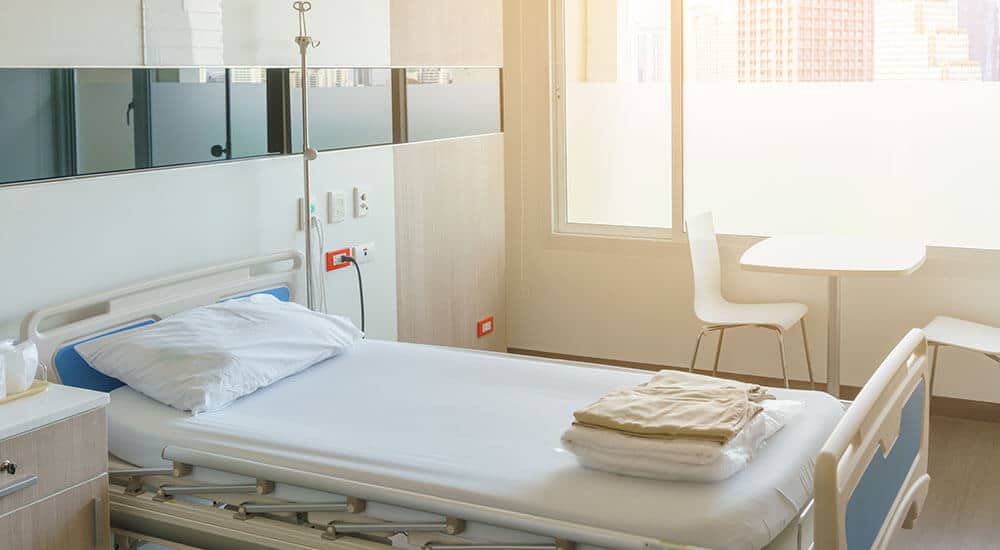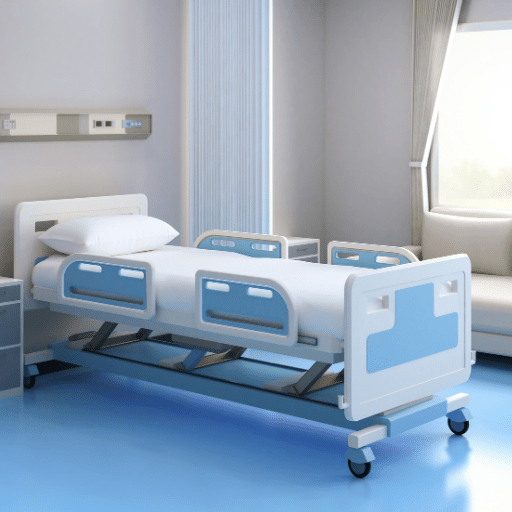The Best Strategy To Use For Hospital Beds For Home Use
The Best Strategy To Use For Hospital Beds For Home Use
Blog Article
What Does Hospital Beds For Home Use Do?
Table of ContentsSome Ideas on Hospital Beds For Home Use You Need To KnowAll about Hospital Beds For Home UseMore About Hospital Beds For Home UseIndicators on Hospital Beds For Home Use You Should KnowHospital Beds For Home Use Things To Know Before You Get ThisOur Hospital Beds For Home Use IdeasThe 9-Minute Rule for Hospital Beds For Home Use
There are 3 main kinds of health center beds: handbook, semi-electric, and fully-electric. Even more kinds of clinical beds exist and they are detailed below. These beds make use of hand cranks to readjust the bed's height and raise and reduce the head and the foot. Hand cranks are typically found at the foot of the bed and call for an individual that is literally efficient in operating.
Semi-electric beds have an electric motor to increase and reduce the head and foot portions of the bed. Clients and caregivers readjust the placing by pushing buttons utilizing a hand necklace. The elevation of the bed is adjusted by hand with a hand crank. Full-electric beds have an electrical motor that can raise the head and foot areas of the bed as well as the entire elevation and positioning of the bed.
About Hospital Beds For Home Use
Some models can also move into more settings, such as the Trendelenburg (tilt) setting. There are numerous kinds of healthcare facility beds, each created to meet certain client requirements. Below are some typical kinds: This is the most typical kind of health center bed, developed for general medical use. It has a manual or electrically adjustable headrest, footrest, and height.
Lower to the ground than a common bed. This kind of bed is made for larger clients, with a wider structure and greater weight ability than a basic bed.
This type of bed is made for seriously ill people who require open surveillance and specialized clinical devices such as ventilators and mixture pumps. This sort of bed is developed for use throughout labor and shipment, with adjustable settings and features to sustain the mother and baby during the birth procedure.
Some Known Facts About Hospital Beds For Home Use.
Numerous feature and the accessories execute broadening grip to various parts of the vertebra and the extremities without moving the body. These are just a couple of instances of the sorts of healthcare facility beds offered. The particular kind of bed used will rely on the individual's condition, clinical requirements, and other variables.
Right here is things you require to recognize. A one-function medical facility bed is a medical bed that allows a client to move just the head or foot section up or down. A 2 function hospital bed generally describes a kind of medical bed that has 2 adjustable functions to aid people in medical facilities or care facilities.

Hospital Beds For Home Use Fundamentals Explained
A 7-function ICU bed is a kind of medical bed that provides a number of adjustable features to support critically sick people in a critical care unit (ICU) (hospital beds for home use). The seven functions usually their website consist of: Back-rest adjustment: The back-rest can be gotten used to different angles to help the individual stay up or lie down comfortably
Height modification: The bed can be raised or reduced to make it less complicated for clients to enter and out of bed, and for caretakers to give care. Trendelenburg setting: The whole bed can be tilted to promote blood circulation and blood circulation in the body. Reverse Trendelenburg setting: The bed can also be slanted in the contrary direction to promote blood flow and flow in learn this here now the upper body.
1. What Size is a Health Center Bed? 2. Just how much Does a Health Center Bed Expense? 3. Why Do Healthcare Facility Beds Have Side Bed Rails? 4. What Are The Main Healthcare Facility Bed Components?. While even more cost effective than electric versions, these beds require exertion for adjustments. The major advantages of manual beds are their affordability and dependability, as they do not depend on power. Nonetheless, the need for hand-operated effort can be a restriction in scenarios where quick adjustments are needed or where caretakers deal with physical difficulties.
Hospital Beds For Home Use - The Facts
Semi-electric hospital beds offer an equilibrium of handbook and electric controls. These beds supply a perfect middle ground in between guidebook and completely electric options, supplying convenience of use without the complete expense of electrical versions.
Semi-electric beds are fit for individuals that require modest changes to the head and foot areas yet can manage without constant elevation adjustments. This makes them a cost-effective option for those looking for comfort and comfort without the need for constant repositioning. Completely electric medical facility beds include electrical controls for seamless modifications to the height, head, and foot sections.
Specialty health center beds, such as ICU beds, long-lasting treatment beds, and bariatric beds, are very carefully designed to deal with particular clinical demands. These beds use tailored look after diverse individual teams, improving both end results and comfort. In the adhering to areas, we will certainly explore the major sorts of specialized hospital beds, describing their certain advantages and applications.
With years of experience in making electric straight actuators - hospital beds for home use and close partnership with the health care market, TiMOTION is well-positioned to give trusted medical care options. Our vertically incorporated company takes care of every action of the manufacturing process, from layout to actuator assembly, guaranteeing we deliver outstanding worth and tailored solutions tailored to your particular demands
How Hospital Beds For Home Use can Save You Time, Stress, and Money.

To find out even more about incorporating these innovations into your items, call us today. More analysis:.
Information see this is sourced from the Medicare Price Report. Accessed January 2025. Short-term intense care hospitals have the highest average variety of beds at 187. They are one of the most typical kind of healthcare facility in the united state and comprise greater than 50% of U.S. hospitals. Kid's hospitals have 178 beds on standard and VA healthcare facilities typical 175 beds.

See This Report on Hospital Beds For Home Use
A hospital bed is a bed designed particularly for clinical functions. It is not only an area for people to rest, yet additionally a system for medical procedures. Unlike average home beds, medical facility beds usually have flexible features, which can assist in medical staff to make numerous changes according to the requirements of clients, such as altering the elevation, disposition, and assistance angle of the back and legs of the bed.
Report this page